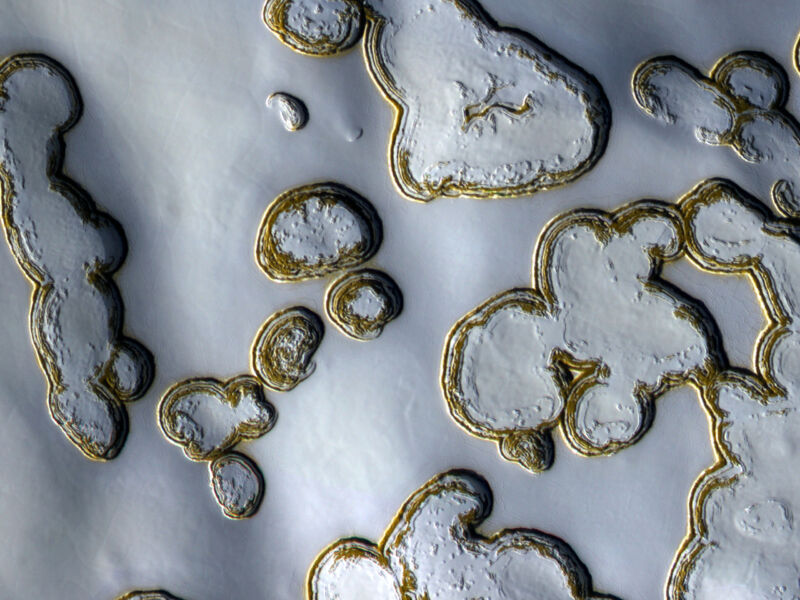Enlarge / Some of the ice near the South Pole of Mars stays around all year long. (credit: NASA/JPL-Caltech/Univ. of Arizona)
Mars is a vast, frozen desert. Nowhere is that more evident than at its poles, which are the coldest regions on the planet. However, it looks like the weather forecast for its harsh winters and slightly more forgiving springs could be different from we thought.
Like Earth, Mars has a volatile cycle that sees snow and ice levels fluctuate as temperatures plummet in the winter and start to rise again in the spring. Unlike Earth, Martian snowfall includes CO2 snow and is influenced by different phenomena. Now, a team of researchers led by Haifeng Xiao of Berlin Technical University in Germany is reexamining the change in snowfall over the course of a year at the Martian north pole. Their findings suggest that forces such as sublimation might mean there is more snow in the winter—and less in the spring—than previously thought.
“We propose to use the shadow variations [of ice blocks] to infer the seasonal depths at high polar latitudes,” Xiao and his team said in a draft manuscript recently published in the Earth and Space Science Open Archive.
Read 8 remaining paragraphs | Comments

